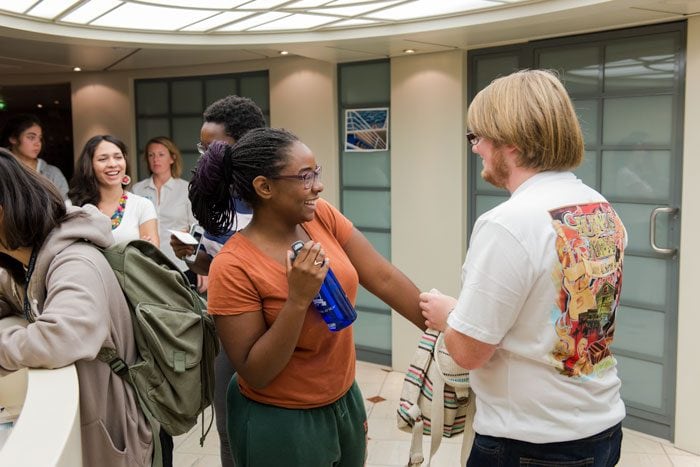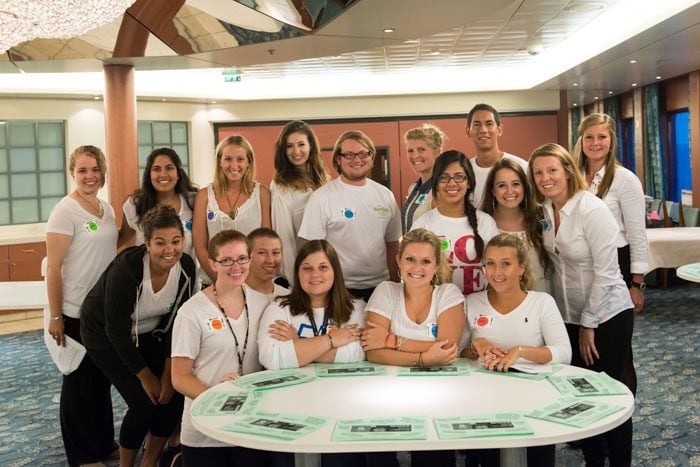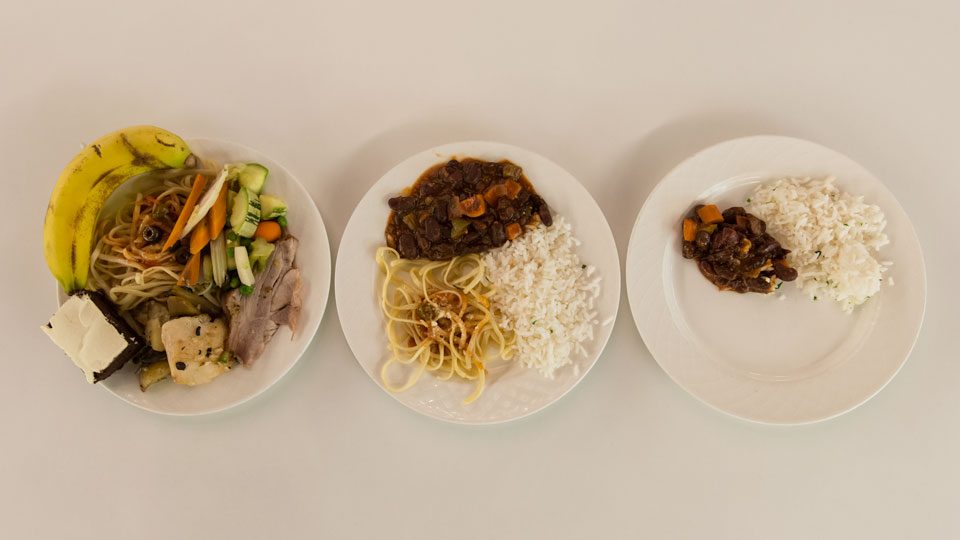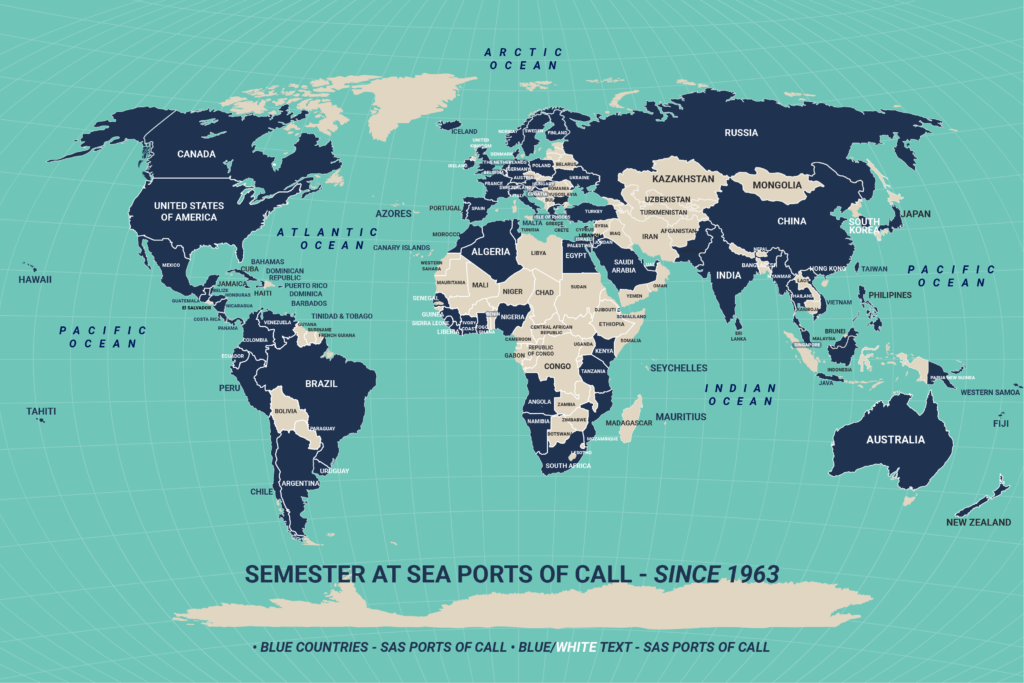
My name is Charles. I live with my family in Malawi, where I work to support them. The effects of climate change are making it impossible to grow enough food to feed my family. My family's well-being relies on the rainfall for our crops, so when the rain doesn't come, it can result in wide-spread hunger.
This was the card that I pulled from a sack, showing my “class” for the Semester at Sea Hunger Banquet. I read my card and followed a line of students through the fifth deck dining hall to the “low-income area”. Ten people to a table with no chairs. We stood and waited for the presentation to begin and for our meals to arrive.
The Hunger Banquet, organized by Tyler Adams of Rhodes College and Carly Davidson of Ithaca College and run with the help of several student volunteers, hosted 270 SASers at dinnertime. The event was sponsored by Oxfam America, which provided the statistical information and the method of organizing and class card examples.

Drawing cards at random, 50% of the participants selected the low-income group, 30%, the middle income and 20%, the upper income. The percentages are based off statistics from the nonprofit Oxfam in which the upper-income households in the world earn more than $6,300 annually, the middle class earns $1,128 to $6,300, and the low income earns less than $1,128 each year.
Student organizers moved us with facts about hunger around the world. Then they showed us how easy it is to fall from the middle-income to the low-income status: a storm wipes out a farmer’s crops and he has no way to feed his family. Chris Lowrie, a junior at Michigan State University, was moved from the middle class to the lower class because his hypothetical family lost money and couldn't provide enough food to feed everyone or pay for schooling for the children.
“It was a moment of realization that my things weren't really mine,” says Chris. “The differences were small between classes, but it was the difference between having a little extra money in my bank account and not having enough to provide for my children.”
In the low-income class, we got one small cup of rice, a cup of beans, and one cup of water. No forks, no knives, no spoons, no napkins. No chairs. We stood and ate with our hands. Role-playing tenant farmers and day laborers, who will walk up to 10 miles a day for drinking water, we represented a group with few creature comforts.

“We wanted to present an element of discomfort and allow participants to think about other issues they could face [as part of the low-income class] rather than the small portion of their meal,” says Carly.
On the other side of the dining hall sat the middle class. As was the case in the low class, the men were served first and most participants left dinner still hungry.
“As a member of the middle class, I indulged in pasta in addition to the rice and beans, drank as much water as I desired, and sat in the comfort of a chair as I ate my dinner. But it was the elite percentage that was given a full buffet,” says Skyler Frisch, a junior at the University of Miami.
While the middle class enjoyed luxuries the lowest income group could not afford, we all learned there are several forces that can push a member into deeper poverty.
“Environmental conditions or weather could damage a middle-class farmer’s entire harvest and cause them to drown in insurmountable debt,” said Jason Muhlenkamp, a financial analyst, who is sailing with his wife, Spanish language Prof. Ashley Kerr, and was seated in the middle-income group. “A serious injury or illness to a middle-class laborer could completely destroy their only means of providing for their family. Many of the countries with a large vulnerable middle class do not have social safety nets like unemployment insurance and workers compensation that we often take for granted in the U.S.”

While the upper class left the dinner with the realization that the world's upper class is not so wealthy as we all might think, the middle- and low-income groups understood what it means to be dissatisfied and hungry, if only for an evening.
“Many of us already knew statistics about world poverty and hunger either via previous education,” said Muhlenkamp, “but the Hunger Banquet helped that knowledge hit home more and make a deeper impression.”



